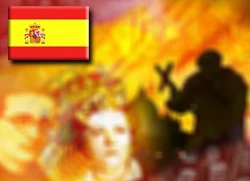State House defends its sovereignty from D.C. intrusionSteamed over a perceived increase in federal usurping of states' rights, Oklahoma's House of Representatives told Washington, D.C., to back off.
Joint House Resolution 1089, passed by an overwhelming 92-3 margin, reasserts Oklahoma's sovereignty under the Tenth Amendment to the U.S. Constitution, and, according to the resolution's own language, is "serving notice to the federal government to cease and desist certain mandates."
The Tenth Amendment states, "The powers not delegated to the United States by the Constitution, nor prohibited by it to the states, are reserved to the states respectively, or to the people."
Traditionally, this language has meant that the federal government is limited in its scope and cannot usurp the sovereign powers of states. In recent decades, however, as the size and reach of the federal government has expanded, many have come to question whether Washington has stepped on states' rights and gotten too big for its breeches.
Charles Key, the Republican state representative who authored the resolution, told WND that he introduced it because he believes the federal government's overstepping of its bounds has put our constitutional form of government in danger.

Oklahoma State Rep. Charles Key |
"The more we stand by and watch the federal government get involved in areas where it has no legal authority, we kill the Constitution a little at a time," he said. "The last few decades, the Constitution has been hanging by a thread."
Specifically, Resolution 1089 says the following:
"The State of Oklahoma hereby claims sovereignty under the Tenth Amendment to the Constitution of the United States over all powers not otherwise enumerated and granted to the federal government by the Constitution of the United States."
The resolution resolves that Oklahoma will "serve as notice and demand to the federal government, as our agent, to cease and desist, effective immediately, mandates that are beyond the scope of these constitutionally delegated powers."
It also instructs that "a copy of this resolution be distributed to the president of the United States, the president of the United States Senate, the speaker of the United States House of Representatives, the speaker of the House and the president of the Senate of each state's legislature of the United States of America, and each member of the Oklahoma congressional delegation."
The resolution does not, as some have speculated, amount to secession, but it does send a warning signal to Washington: Oklahoma does not intend to be bullied by big brother government.
The Sooner State became a hotbed of federal vs. state authority clashes earlier this month when a federal judge blocked a portion of Oklahoma's tough immigration laws, ruling that plaintiffs would likely establish that the state mandates preempted federal immigration laws.
Oklahoma's immigration statute, known as the Oklahoma Taxpayer and Citizen Protection Act of 2007, originated as House Bill 1804 (co-authored, incidentally, by Key). It has been characterized by USA Today as "arguably the nation's toughest state law targeting illegal immigration."
The statute prohibits illegal immigrants from receiving tax-supported services and makes it a state crime to transport or harbor illegal immigrants. It also mandates that businesses take measures to verify the work eligibility of employees and independent contractors.
The U.S. Chamber of Commerce and individual chambers of commerce in Oklahoma challenged the latter mandates, set to go into effect July 1, in court.
On June 4th, U.S. District Judge Robin J. Cauthron issued an injunction against enforcing the July 1 mandates.
"We've just had a federal judge say that our immigration law's employer provisions are unconstitutional, claiming it as federal government territory," said Key in response. "That goes right to the issue of (Resolution 1089). The federal government doesn't have the right to have sole domain over that issue or many of the issues it has spilled over into."
Though House Joint Resolution 1089 received great support in Oklahoma's House of Representatives, it has now hit a roadblock. In the state's Senate, where the seats are split, 24-24, between Republicans and Democrats, the resolution was sent to the Senate's rules committee, where it languished without action until the legislature adjourned.
According to Key, the Senate has worked out agreements on how to manage the political tie, including power given to the Democratic senators to not hear certain bills. Those senators, says Key, refuse to even hear Resolution 1089.
In the House, where Republicans enjoy a 57-44 majority, Resolution 1089 received a hearing and was supported overwhelmingly on both sides of the aisle.
"I was on the Democratic side of the floor," said Key, "and one member went off talking about how far we've gotten, how bad (federal overreaches of power) are getting – it's the kind of thing you hear in coffee shops."
Key said his bill "is making a difference" in the way legislators in Oklahoma are talking and thinking about state's rights. "I think it will make even more of a difference," he said, "when I bring it up again." He vows to put the pressure on Oklahoma's Senate to pass a resolution like 1089, and he plans to begin communicating the cause with legislators around the country, urging them to bring up the issue in their states.
Key passed a similar resolution in 1994, when he was serving a previous tenure in the legislature. But that attempt was only a House resolution. He authored 1089 as a joint resolution because, he said, he wanted to increase its exposure. "As people who believe in this constitutional form of government," he said, "we need to bring this issue to a national level and debate."















![[cardinal-castrillon-catholic-herald-priests-dont-need-permission-for-traditional-mass.jpg]](https://blogger.googleusercontent.com/img/b/R29vZ2xl/AVvXsEgK94z3Ei6zPRMnKnvJnmEgqRfACoUn_Y-er52nmyb58BN5AOpQuR85tePvWArNC6IdNtXIhy-IkruDuA1STrSM56Yz0ViYqSCW8g_WaZoz0YTkweHAoRd2JMxgpykGCpqTrCWNEkiE-w/s1600/cardinal-castrillon-catholic-herald-priests-dont-need-permission-for-traditional-mass.jpg)











